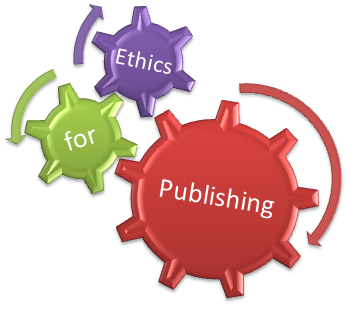Identifying Structure-Borne Noise Transmission in Building
(*) Corresponding author
DOI: https://doi.org/10.15866/ireme.v10i3.8256
Abstract
This paper presents an identification of the noise and vibration transmission in a building. The study includes noise measurements and noise mapping for two lecture rooms as well as vibration measurements on the floor in an office room. The results shows that the background noise level of the empty lecture rooms have exceeded the recommended limit by ANSI 12.2-2008, i.e. above 35 dB(A) due to the excessive noise radiated from the structure-borne source coming from the VAV system above the ceiling. The VAV system also transmits waves of vibration through the floor to the office on the level above causing annoying low frequency vibration. From the measured signal on the VAV, it is found that the system suffers from mechanical rotating looseness which must be solved to reduce the transmission of noise and vibration in the building.
Copyright © 2016 Praise Worthy Prize - All rights reserved.
Keywords
References
ANSI Standard S12.2, Criteria for Evaluating Room Noise. Acoustical Society of America (2008).
http://dx.doi.org/10.1121/1.4778493
ASHRAE Handbook, Chapter 48, Noise and Vibration Control, In HVAC Applications,American Society of Heating, Refrigeration, and Air Conditioning Engineers (2007).
J. Romeu, S. Jiménez, R. Capdevila, Noise emitted by water supply installations. Applied Acoustics, 65(4), pp. 401-419, 2004.
http://dx.doi.org/10.1016/j.apacoust.2003.10.001
B.A.T Petersson, B. M. Gibbs, Towards a structure-borne sound source characterization,Applied Acoustics, 61(3), pp. 325-343, 2008.
http://dx.doi.org/10.1016/s0003-682x(00)00037-2
A. T. Moorhouse, On the characteristic power of structure-borne sound sources, Journal of Sound and Vibration, 248(3), pp. 441-459, 2001.
http://dx.doi.org/10.1006/jsvi.2001.3797
M. M. Späh, B. M Gibbs, Reception plate method for characterisation of structure-borne sound sources in buildings: Assumptions and application, Applied Acoustics, 70(2), pp. 361-368, 2009.
http://dx.doi.org/10.1016/j.apacoust.2008.03.001
A. Putra, N. F. Saari, H. Bakri, R. Ramlan, R. M. Dan, Characterisation of Structure-Borne Sound Source Using Reception Plate Method,The Scientific World Journal 2013 (2013)
http://dx.doi.org/10.1155/2013/742853
T. H. Alber, B. M. Gibbs, H. M. Fischer, Characterisation of valves as sound sources: Structure-borne sound, Applied Acoustics, 70(5),pp. 661-673, 2009.
http://dx.doi.org/10.1016/j.apacoust.2008.08.002
R. Hetu, C. Truchon-Gagnon, S. A. Bilodeau, Problems of noise in school settings: a review of literature and the results of an exploratory study, Journal of Speech-Language Pathology and Audiology, 14(3), pp. 31–8 (1990).
P.G. Pinho, M. Pinto, Ricardo M.S.F. Almeida, S.M. Lopes, L.T. Lemos, Aspects concerning the acoustical performance of school buildings in Portugal, Applied Acoustics, 106, pp. 129-134, 2016.
http://dx.doi.org/10.1016/j.apacoust.2016.01.002
L.L. Beranek, I. L.Vér, Noise and vibration control engineering (John Wiley & Sons, 1992, 146-149).
L. M. Wang, E. Bowden, Performance review of indoor noise criteria,Architectural Engineering (2003).
http://dx.doi.org/10.1061/40699(2003)2
W. E. Blazier, Revised noise criteria for application in the acoustical design and rating of HVAC systems. Noise Control Engineering, 16(2), pp. 64-73, 1981.
http://dx.doi.org/10.3397/1.2832172
I. C. M. Guedes, S. R.Bertoli, P. H. Zannin, Influence of urban shapes on environmental noise: A case study in Aracaju—Brazil, Science of the Total Environment, 412, pp. 66-76, 2011.
http://dx.doi.org/10.1016/j.scitotenv.2011.10.018
A. Putra, F. A. Munir, C. D. Juis, On a simple technique to measure the airborne noise in a car interior using substitution source,International Journal of Vehicle Noise and Vibration, 8(3), pp. 275-287, 2012.
http://dx.doi.org/10.1504/ijvnv.2012.048166
Mobius Institute, Vibration Training Course Book Category II (2012).
Ramli, R., Abid Noor, A., Abdul Samad, S., Modified Adaptive Line Enhancer in Variable Noise Environments using Set-Membership Adaptive Algorithm, (2014) International Review on Computers and Software (IRECOS), 9 (8), pp. 1468-1475.
http://dx.doi.org/10.15866/irecos.v9i8.2923
P.G. Pinho, M. Pinto, Ricardo M.S.F. Almeida, S.M. Lopes, L.T. Lemos, Aspects concerning the acoustical performance of school buildings in Portugal, Applied Acoustics, Volume 106, May 2016, Pages 129-134, ISSN 0003-682X.
http://dx.doi.org/10.1016/j.apacoust.2016.01.002
Kothandaraman, M., Pachaiyappan, A., Wavelet Based Adaptive Filtering Algorithms for Acoustic Noise Cancellation, (2014) International Review on Computers and Software (IRECOS), 9 (10), pp. 1675-1681.
http://dx.doi.org/10.15866/irecos.v9i10.4308
Refbacks
- There are currently no refbacks.
Please send any question about this web site to info@praiseworthyprize.com
Copyright © 2005-2024 Praise Worthy Prize








